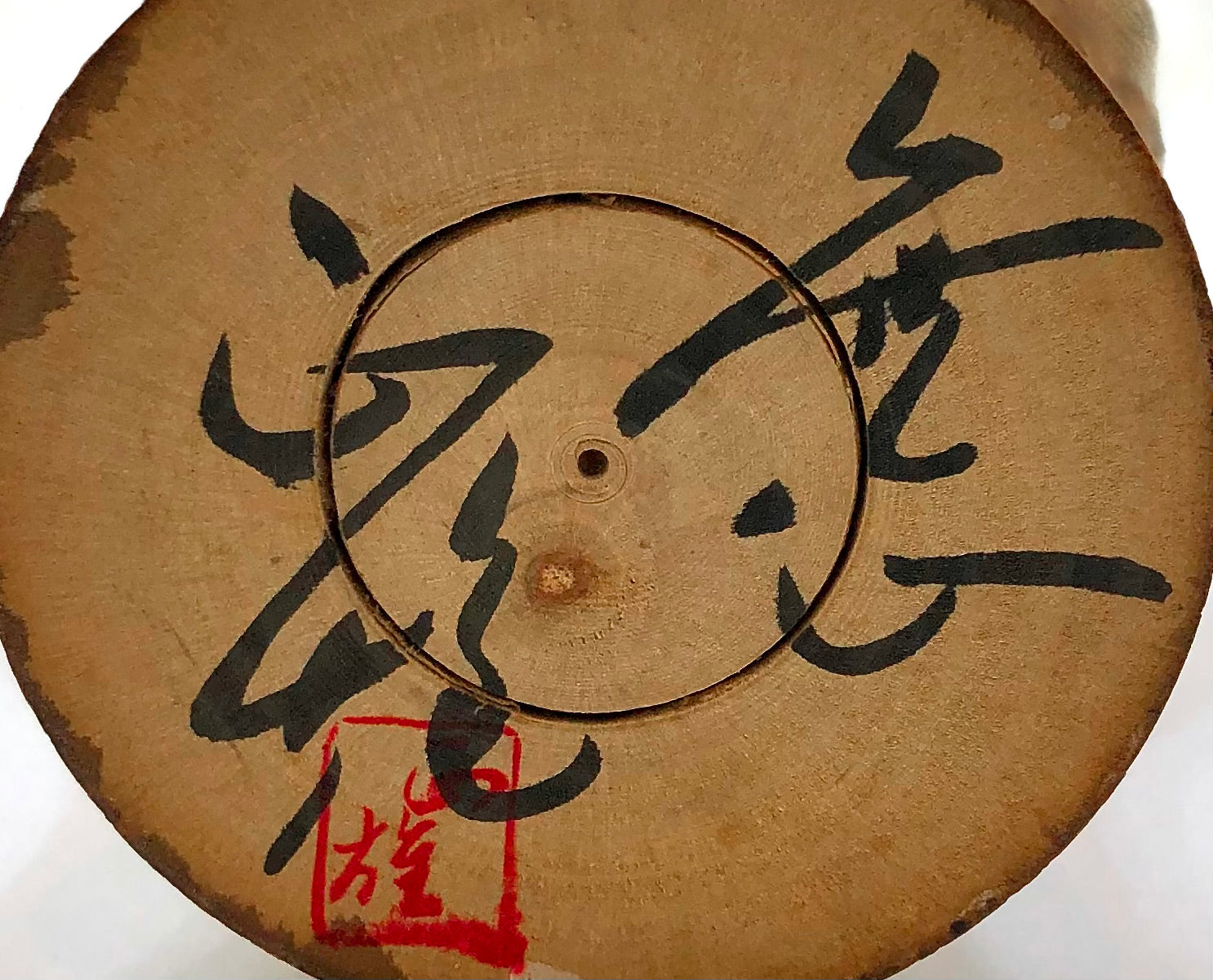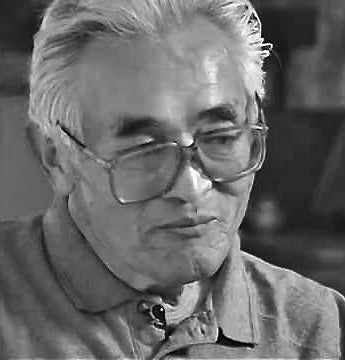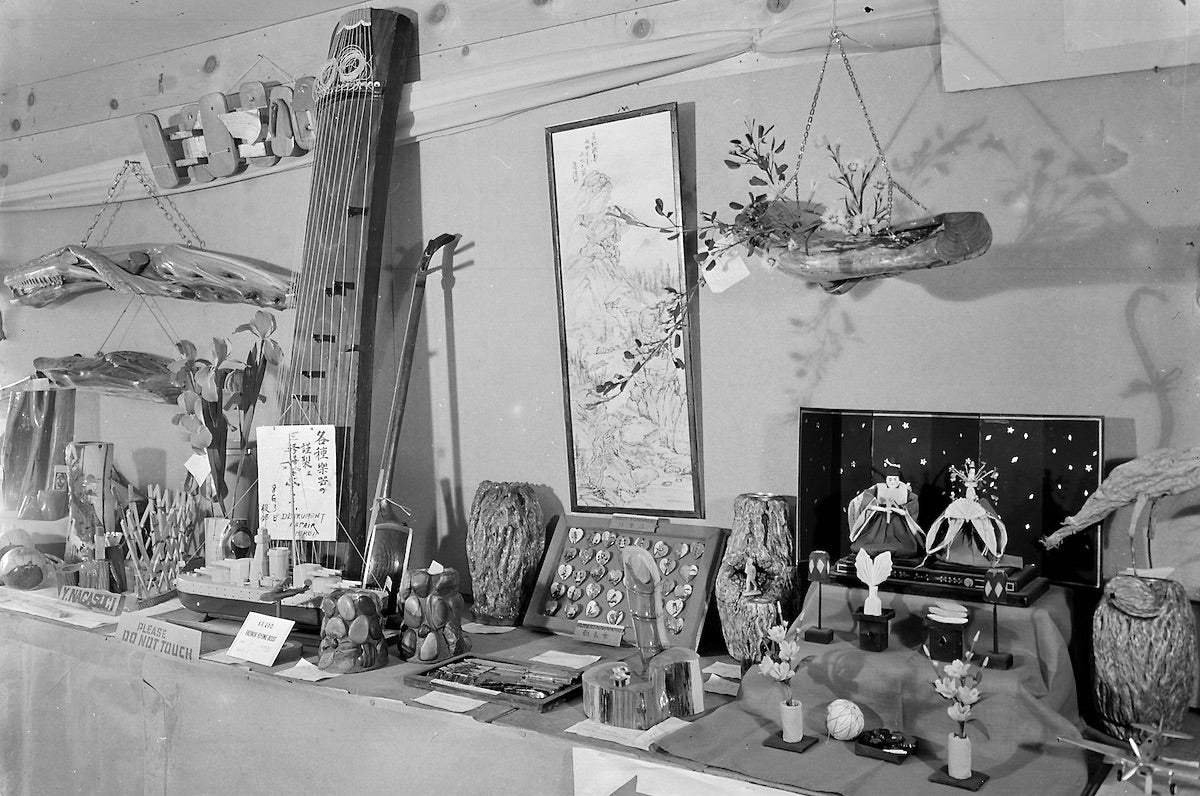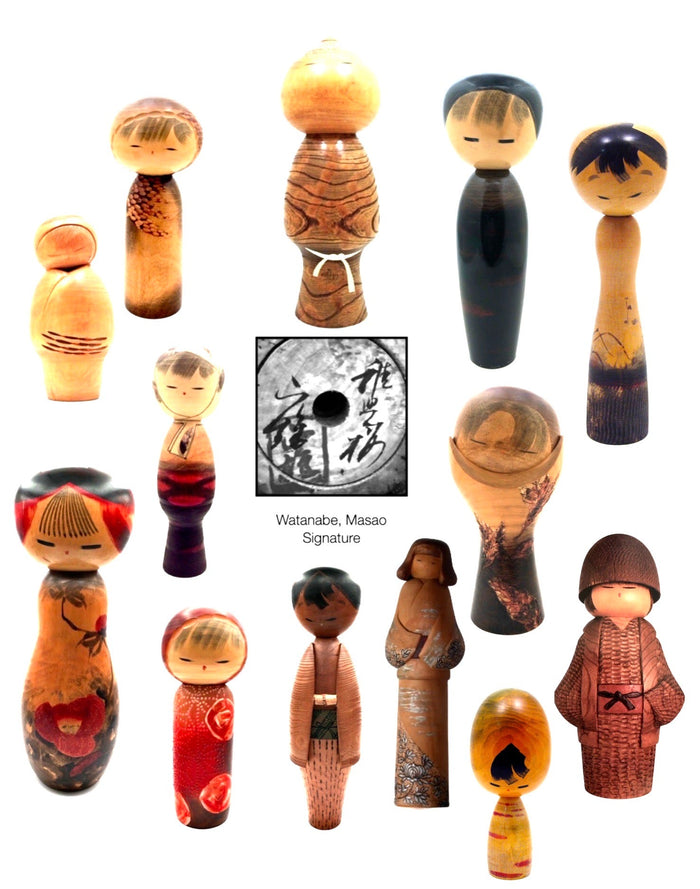



Vintage Sosaku Kokeshi entitled: Muchin, (Innocence), by Masao Watanabe
Dimensions: 11.8”h
Watanabe-san arguably is one of the most popular and prolific 20th/century Sosaku Kokeshi artists. He is famous as shown in this doll for not only minimally carving beautiful woods but also for his use of the gessoed surfaces, featuring a floral design as the central motif. This unique ornamentation has been the most outstanding feature of this version of a Kokeshi, adding another dimension to his character. His faces almost unanimously depict a universal theme of this doll as it is named ‘innocence’, (Mushin), with his boyish-styled hair.
The representation of clothing, in this case, the Yukata or in Japanese, yo͝oˈkädə, (a light cotton kimono, worn in casual settings such as summer festivals and to nearby bathhouses), and the white painting of the sash. This design is common for this particular series for which the raised motif resembles Shibori, a type of tie-dyeing that gives texture to the garment. The doll is signed by Watanabe on the bottom of the piece with the name ‘Muchin’ meaning to eliminate the emotions of anger and sadness and a representation of old Japanese culture. An emotion felt by every incarcerated American Japanese, (those who had cultural ties to an enemy during wartime), throughout the years of internment. NOTE: See the last image, (4) of the diverse creative folk art produced during those years of internment. After extensive research at Nikkei associated museums, we are unaware of any Kokeshi produced during that period of time other than a few unnotable rough one-blade carved dolls. We propose that the Kokeshi entitled: Muchin, (Innocense), may have been inspired by the number of children interned and made shortly after the American Japanese citizens, such as Watanabe were released.
Condition: The figure has a timeworn look from lack of attention and oxidation resulting from the type of care it experienced over a long period. There is a dark brown patination throughout the piece including the exposed wood and gesso work that has lost its original visual character, and loss of sheen on the surface. That said this represents one of the first original Watanabe dolls, (1950s), showing no structural problems, but the original owners obviously did not have the appreciation of the story of ‘innocence’, and its distinctive character.
BIOGRAPHIC INFORMATION: Masao Watanabe | 1917-2007 (89)
Born in Fukushima, Watanabe-san studied under Traditional Yajirou Master Sato, Tatsuo of Miyagi Prefecture. After relocation to America, Masao Watanabe, (Nisei male), was incarcerated at the Puyallup Assembly Center, Washington, and transferred to the Minidoka internment camp, Idaho during World War II. Arguably, the most popular and prolific of the 20th/c Sosaku Kokeshi artists, he began his craft in the early 1950s. He is famous for not only minimally carving beautiful woods, but also for his use of gessoed surfaces and lacquer. A multiple award winner in Kokeshi competitions around the world, his works are permanently exhibited at the Nuremberg Toy Museum in Germany.

Artisan
Woodworker: Watanabe, Masao
1917-2007
Biographical History:
Watanabe-san is considered to be one of the greatest Sosaku Kokeshi artists in all of Japan. Born in Fukushima, Watanabe-san studied under Traditional Yajirou Master Sato, Tatsuo of Miyagi Prefecture. Arguably, the most popular and prolific of the 20th/c Sosaku Kokeshi artists, he began his craft in the early 1950s. His most famous Kokeshi themes are that of ‘innocence’ (Mushin), and his doll entitled: Chigo Zakura (Cherry Blossom Child) won the Minister’s Award and was presented to the Beatles in 1965, after their appearance in Japan with Sir Joseph Lockwood, Chairman of EMI Record Distributors, England. A multiple award winner from 1963-1981 in Kokeshi competitions around the world (Prime Minister's prizes for the works of "Chigozskura" in 1963 and "Shojo" in 1981), along with numerous prizes by the Modern Kokeshi Artist Association and JETRO. He held two exhibitions in Japan and was exempt from the examination of the All Japan Kokeshi Contest, a Member of the Nippon Kokeshi Artistic Handicraft Association. His works are permanently exhibited at the Nuremberg Toy Museum in Germany.

Collector's note – descriptive qualities, standard characteristics & ornamentation styles:
Of all the Kokeshi the emphasis is on the color of the natural wood and texture, and his diversity of form is the most recognizable characteristic of his dolls. The representation of clothing is seen in the use of the diverse rendering of Kimono, Yukata, and Haori complemented by the painted details that are common throughout his works. Several dolls not only show wonderful color rendition as well as textured/ raised applications resembling Shibori, a type of tie-dyeing that gives texture to the garment. He also prominently features the rose and camellia as a central motif along with extremely expressive eyes throughout the range of ages represented in his works.
Signature Research:
We heard from our colleague at Soulportals KokeshiVillage, a website researching vintage and contemporary Kokeshi artists and signatures. It was brought to our attention that Watanabe subcontracted an artist named Sato Norio to reproduce large numbers of his Kokeshi in the 1960s because of an enormous number of orders for his award-winning design Chigazokaura. Watanabe's signature for pieces designed and crafted by him is shown on this page celebrating a number of his award-winning dolls. Nario's versions were entitled Plum Grove and approved/attributed to Masao but not crafted by him.
Explore & Learn More about Woodworker: Watanabe, Masao